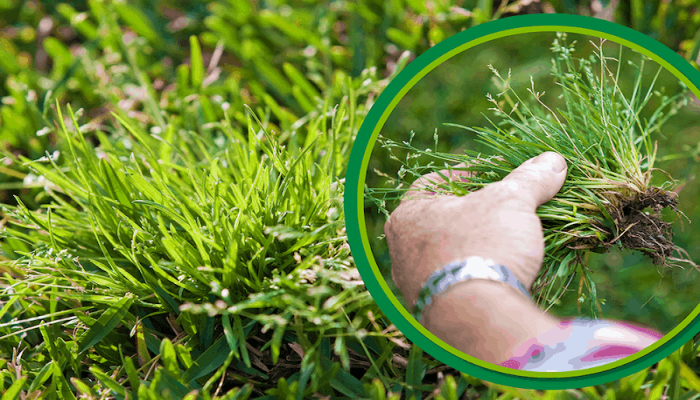 Launch apps instantly. Claim $200 credits on DigitalOcean
Launch apps instantly. Claim $200 credits on DigitalOcean
Unleashing the Green: A Guide to Choosing and Using Lawn Weed Killers
Written by abcd » Updated on: January 03rd, 2024

Introduction:
A lush, weed-free lawn is the dream of every homeowner, and achieving this requires effective weed control strategies. Enter the world of lawn weed killers—a vital tool in maintaining a healthy and pristine lawn. In this guide, we will delve into the essentials of weed killers, exploring how to choose the right product and use it effectively to reclaim your green paradise.
Understanding Lawn Weed Killers:
Selective vs. Non-Selective:
Selective Weed Killers: These target specific types of weeds without harming desirable grass. Ideal for lawns with mixed vegetation, selective weed killers are tailored to combat particular weed varieties.
Non-Selective Weed Killers: These are designed to eliminate all plant life in the targeted area. While effective for clearing large spaces, they should be used with caution in lawns to avoid damaging desired grass.Ideal application conditions include a calm day with no rain in the forecast. Rain shortly after application may reduce the effectiveness of some weed killers.
Pre-Emergent vs. Post-Emergent:
Pre-Emergent Weed Killers: Applied before weed seeds germinate, pre-emergent herbicides create a barrier that prevents weed growth. They are effective for controlling annual weeds and are often applied in early spring.
Post-Emergent Weed Killers: Designed to tackle existing weeds, post-emergent herbicides are applied directly to the foliage. They are effective against both broadleaf and grassy weeds and can be used as spot treatments or for widespread infestations.
Choosing the Right Weed Killer:
Identify the Weeds:
Different weeds require different treatments. Identify the types of weeds in your lawn to select a weed killer that targets them effectively.
Consider Your Grass Type:
Ensure the weed killer is safe for your specific type of grass. Some formulations may harm certain grass varieties, so it's crucial to choose a product compatible with your lawn.Ideal application conditions include a calm day with no rain in the forecast. Rain shortly after application may reduce the effectiveness of some weed killers.
Application Method:
Weed killers come in various forms, including liquid concentrates, ready-to-use sprays, and granules. Choose a formulation that suits your preferences and the size of your lawn.Ideal application conditions include a calm day with no rain in the forecast. Rain shortly after application may reduce the effectiveness of some weed killers.
Seasonal Considerations:
Timing is crucial. Apply pre-emergent weed killers before the growing season begins, and post-emergent treatments when weeds are actively growing. Consider local climate patterns for optimal timing.
Using Weed Killers Effectively:
Follow Label Instructions:
Read and follow the manufacturer's instructions carefully. Adhering to recommended application rates and guidelines ensures effective weed control and minimizes the risk of damage to your lawn.Read and follow the manufacturer's instructions carefully. Adhering to recommended application rates and guidelines ensures effective weed control and minimizes the risk of damage to your lawn.Ideal application conditions include a calm day with no rain in the forecast. Rain shortly after application may reduce the effectiveness of some weed killers.
Spot Treatments:
For localized weed problems, consider spot treatments rather than applying weed killer to the entire lawn. This approach minimizes the impact on beneficial plants and reduces chemical exposure.For localized weed problems, consider spot treatments rather than applying weed killer to the entire lawn. This approach minimizes the impact on beneficial plants and reduces chemical exposure.Ideal application conditions include a calm day with no rain in the forecast. Rain shortly after application may reduce the effectiveness of some weed killers.
Weather Conditions:
Ideal application conditions include a calm day with no rain in the forecast. Rain shortly after application may reduce the effectiveness of some weed killers.Ideal application conditions include a calm day with no rain in the forecast. Rain shortly after application may reduce the effectiveness of some weed killers.Ideal application conditions include a calm day with no rain in the forecast. Rain shortly after application may reduce the effectiveness of some weed killers.
Post-Treatment Care:
After applying weed killer, provide proper care for your lawn. Adequate watering, fertilization, and mowing contribute to a healthy, resilient lawn that is less susceptible to weed infestations.
Conclusion:
Effectively managing weeds in your lawn involves a combination of choosing the right weed killer, applying it judiciously, and maintaining a healthy lawn. By understanding the types of lawn weed killers available, considering your specific lawn conditions, and following best practices, you can reclaim your green space and enjoy a vibrant, weed-free lawn.
Copyright © 2024 IndiBlogHub.com Hosted on Digital Ocean









Post a Comment
To leave a comment, please Login or Register